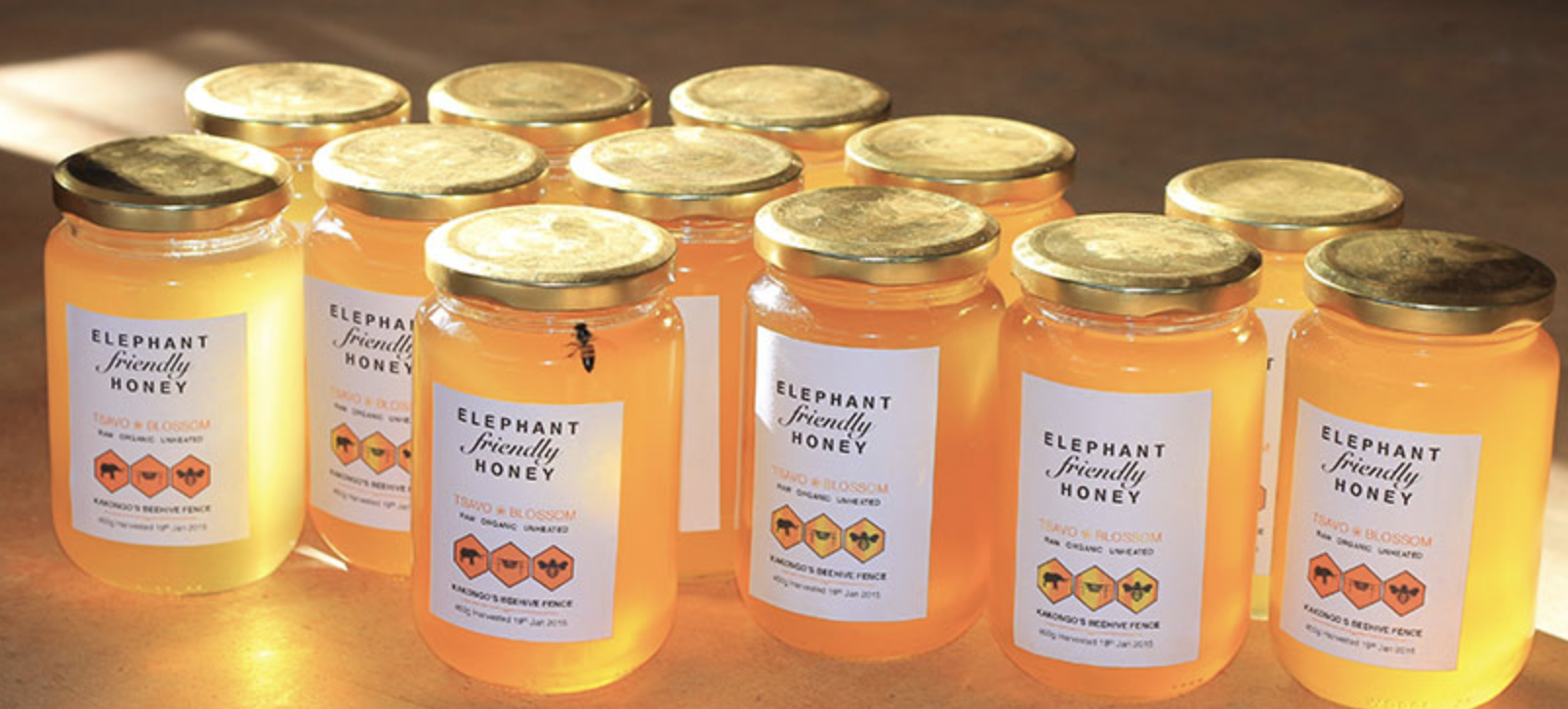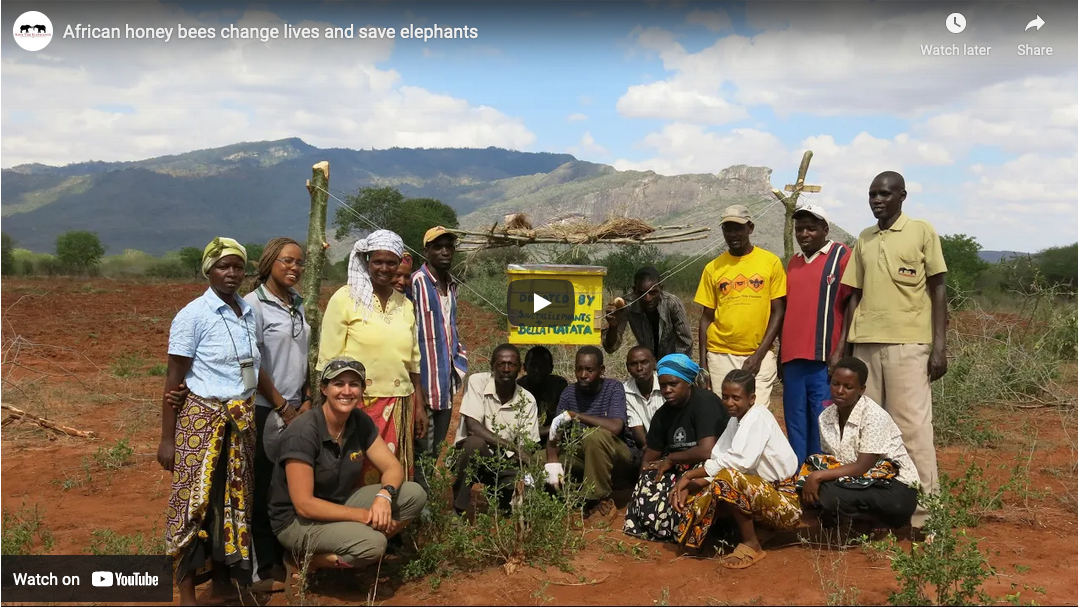Organization Spotlight : Elephants & Bees Project
Love, Care and Consciousness are built into our DNA at DrTung’s. It’s a concept we weave into every part of our business model — from our products, to our consumers, to our team, to our planet and to all sentient beings. There are many, many organizations working diligently to make this planet a better place. Some of these organizations have touched our hearts in very deep ways. To share the amazing work from a few of our favorite groups that we support through donations, we’re spotlighting one incredible organization each month throughout the year.
The 8th organization in our series is…
Elephants and Bees Project
Save the Elephants
"The African elephant is perhaps the most iconic migratory land mammal on the continent. Catastrophic poaching in the 1970’s and 80’s saw their populations plummet to a mere fraction of pre 1970’s numbers. An effective international ivory trade ban implemented by CITES in 1989 combined with improved wildlife management strategies, has resulted in rising numbers, particularly in East and Southern Africa. However, these elephants are expanding into a world now densely settled by people. Rising incidents of human- elephant conflict are occurring where elephants are exploring old migratory routes and either being blocked by new developments or breaking into farmland plots to take advantage of nutritional agricultural produce."1
A single crop raiding event by a large elephant family can wipe out an entire year’s crop for a local human family.
Can a simple strategic use of nature be the answer to the human-elephant conflict problem?
Enter the African honey bee. The Elephant and Bees Project is an innovative, award-winning research project offering a real solution to the human-elephant conflict problem. The project explores the use of beehive fences which serve as natural elephant deterrents.
Yes, using tiny honey bees can help both people and elephants.
How it started…
It was discovered that elephants are scared of bees. It all started when conservationists from Save the Elephants and local tribesman were walking through the bush in northern Kenya. Conservationists noticed a particular stand of trees — all the trees had been decimated by elephants except one. Local tribesman told conservationists that there was a beehive in that tree and elephants are afraid of bees. Scientists wanted to confirm this was true and set about conducting bee playback experiments — to confirm if elephants actually run away from bees and also to see if they communicate about bees by warning other nearby elephants. Experiments included dropping hidden microphones and speakers around herds of elephants resting under trees, then playing bee sounds through speakers and filming their behavior while recording their vocalization with the hidden microphones. Elephants not only ran away and shook their heads to knock the bees away but they also produced a special rumble that warns other elephants. When other elephants hear this rumble alarm-call, they shake their heads and run away just as if the bees were there.
Armed with this knowledge Save the Elephants have been constructing beehive fences — fences made of actual beehives. The beehives are connected with wire, one to another, all the way around the boundary of a farm. If an elephant approaches the farm, he’ll hit the wire connecting the beehives, the beehives all along the fence line will swing and release the bees, scaring the elephant away. This is an incredibly successful deterrent system that stops elephants from breaking into these farms thus reducing human-elephant conflict. These beehive fences successfully stop 80% of elephants from entering the farms.
The success of the beehive fences has spread throughout many African countries and is even being adopted into other countries like India, Nepal, Sri Lanka and Thailand.2
But there’s another win in this story...
While beehive fences themselves are primarily important in mitigating human-elephant conflict, they have additional benefits.
They produce delicious “Elephant-Friendly” honey — creating a social and economic boost to farmers through harvesting of the honey. The Elephants and Bees Project purchases the raw honey from the farmers at a generous price, ensuring that farmers participating in the beehive fence project have an alternative source of income and stay motivated and engaged in the project. And the additional bee pollinators in these areas help to increase pollination rates of natural vegetation such as trees, bushes, flowering shrubs and wild grasses.3

The takeaway
Human-wildlife conflict is a complex issue — one that requires outside-the-box solutions. Save the Elephants and Elephants and Bees have come up with just that. It’s inspiring to think that simply looking to nature can provide the most brilliant solutions of all — tiny honey bees bringing peace between giant elephants and human beings.
You can read more about Elephants and Bees on their site or follow them on social media. If their work resonates with you, we encourage you to share their story with your friends and family. You can also get involved by donating here.
As always, do what resonates with you. One thing we can all do is to take a few moments each day to take care of ourselves and cultivate positive energy. When you feel positive, you share that feeling with those around you — it’s contagious (in a good way). Each of us adding positivity to ourselves and spreading it to those around us adds to the collective Love, Care and Consciousness of humankind. Together we can make a difference to each other, to our environment and to all sentient beings.



By Penny Westergaard 08/12/2022 09:05:15
What an incredible solution to enabling elephants, bees & people to co-exist in such a beautiful way!